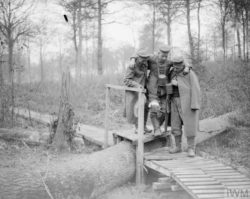The Sick and Injured of Skipton Camp
This summer we have two student interns working on the project. One of them, Alice Craft, has been looking at the extent of the injuries and illness among the Skipton prisoners:
As the translation of Kriegsgefangen in Skipton is receiving its final touches ready for publication, two student interns on the Q-Step scheme have been analysing some of the data collected. Researching and gathering data from the records of those imprisoned at Skipton has been a long task, but it will help us build a full picture of the lives of the prisoners before, during and after their time in the Skipton Camp. A broader picture of the German Officers is being fleshed out despite the fact that this data gathering is still ongoing.
Using the records recently made available by the International Committee of the Red Cross (ICRC)[1], a huge amount of information has been gathered on all of the 916 prisoners that have so far been identified to have spent time in Skipton. This includes their full names, ages and home addresses, but also more specific information regarding their place and date of capture and military rank. The intricate and diligent record keeping that took place in Britain in the First World War era is astounding and has allowed for new avenues of data analysis.
One avenue in particular that the student interns have been working on recently is the health of the prisoners who had just come off the battlefields of the Western Front, for instance at Cambrai, Ypres, Passchendaele and the Somme. We wanted to find out how many of the prisoners arrived at the camp injured or sick, and how these injuries were categorised by the British captors. Later we will use this data to ask if this had any impact on the outbreak of Influenza in the camp in early 1919 and the deaths of 47 of the prisoners of war.
| Table 1- Injuries and Sickness at time of capture as percentage of the whole POW population | ||
| Number of Prisoners of War | Percentage of Prisoners of War | |
| Injured | 318 | 35% |
| Sick | 18 | 2% |
| Healthy | 580 | 63% |
| Total | 916 | 100.00% |
We have discovered that from the 916 men imprisoned in the camp during 1918 and 1919, 318 were injured at the time of capture (Table 1). Injuries include but are not exclusive to bayonet wounds, gunshot wounds, amputations, broken bones and even 2 cases of gassing. Furthermore, 18 were known to be sick at the time of capture, of whom 6 had influenza. Further investigations are ongoing into how this impacted the health of these prisoners and of the camp overall.
We have also been researching the kinds of injury that were most common for prisoners of war to have picked up on the battlefield. An overwhelming majority, 77%, of the 318 injured prisoners had gunshot wounds (this represents over a quarter of the 916 prisoners). Interestingly, only one prisoner is recorded to have been suffering with shell-shock at the time of his capture.

THE BATTLE OF CAMBRAI, NOVEMBER-DECEMBER 1917 (Q 6280) Wounded German prisoners, captured by the 51st Division, coming in along a duckboard track. Near Trescault, 20 November 1917. Copyright: © IWM. Original Source: http://www.iwm.org.uk/collections/item/object/205238275
[1] Prisoners of the First World War | International Committee of the Red Cross. (2019). [online] Available at: https://grandeguerre.icrc.org/
